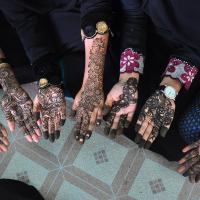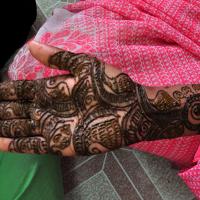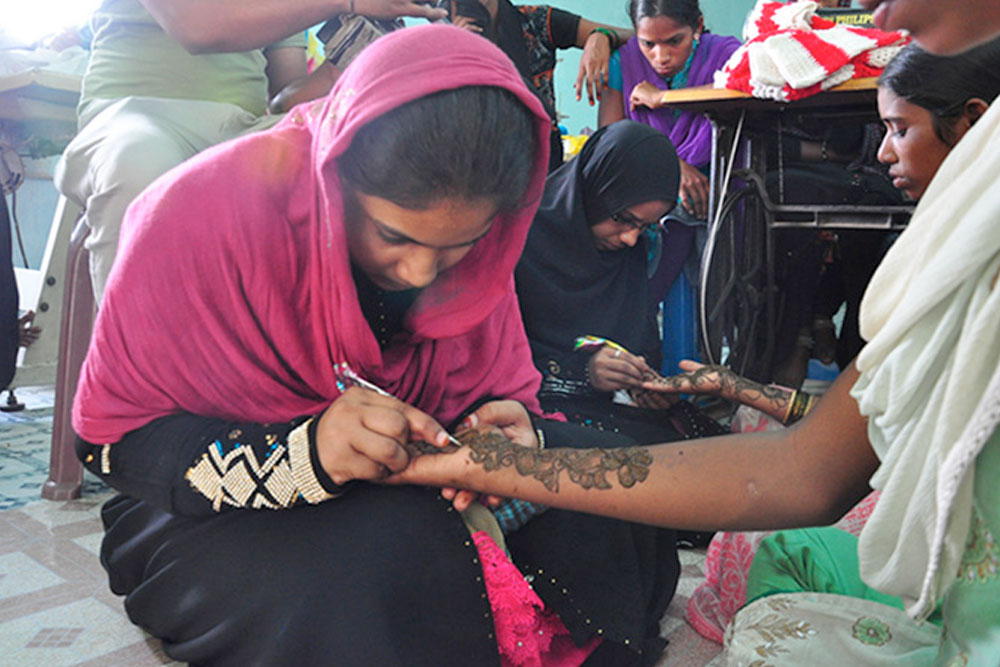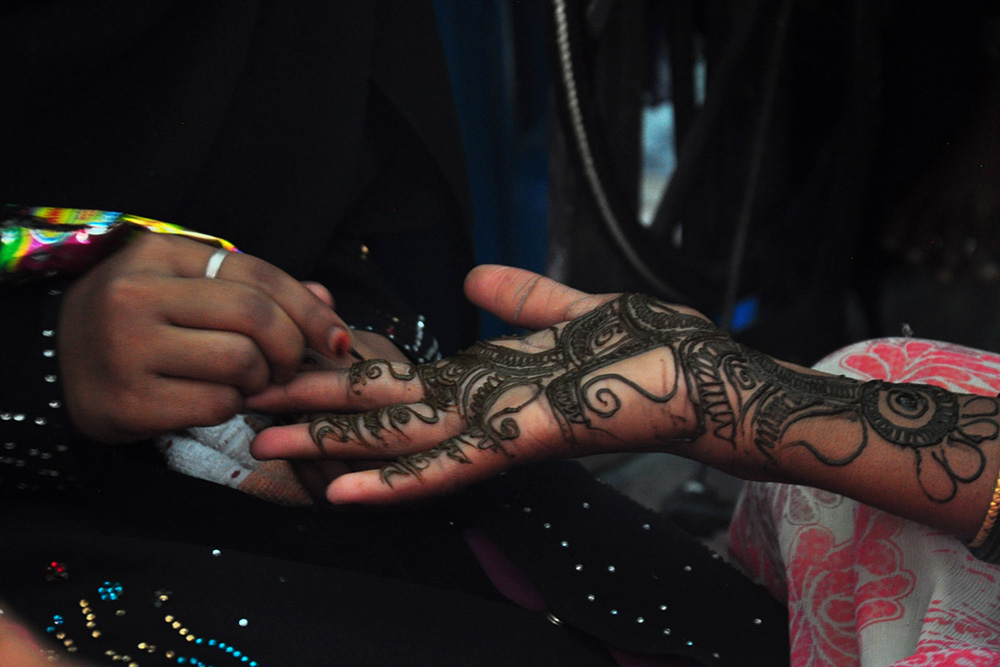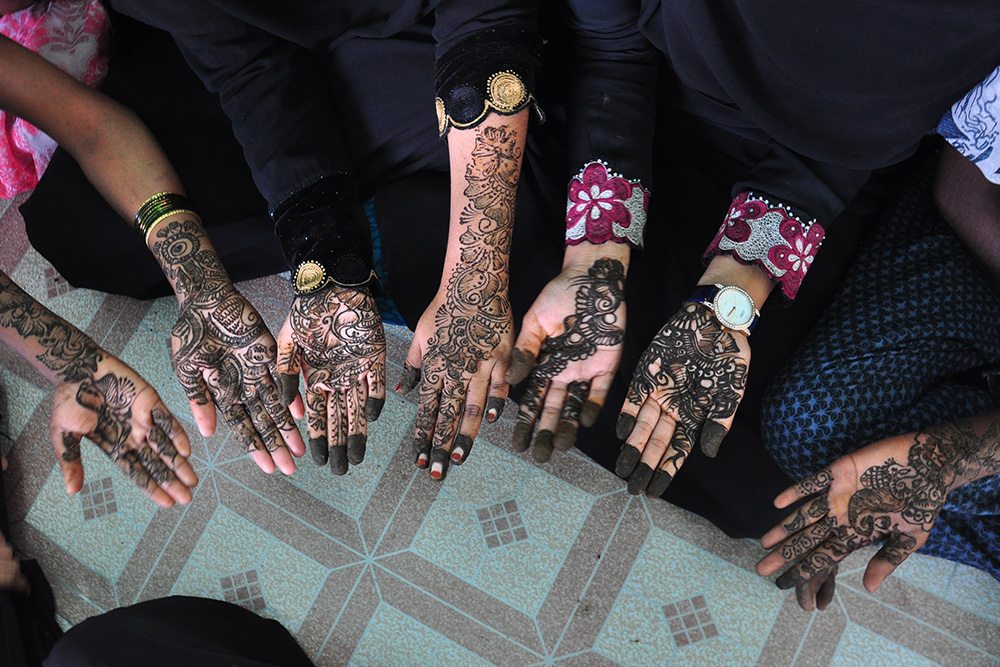Design Gallery
Mehndi Art - Yadgiri, Karnataka
Hand Decorating Art
by
Mehndi is the art of decorating hands, feet, or bodies by applying a henna paste. The powdered dry leaves of the henna plant (Lawsonia Inermis), tea, lemon, and few drops of Eucalyptus oil are used while making a henna paste. After applying Mehndi, it is left overnight to get dry, and in the morning, it stains cherry-red to brown colour after washing. An ancient form of body art is still popular among Indian women, Africa, and the Middle East. The name Mehndi is derived from the Sanskrit word ‘mendhika’. The usage of this art is mentioned in the earliest Hindu Vedic ritual books. Applying mehndi is the most common tradition in rituals and ceremonies.
This temporary form of body decoration not only adds beauty but also keeps the body cool. Earlier, a dot was applied to the palm of the hands, and it changed gradually to lines and other shapes. Today we see this elaboration became beautiful design patterns. Arabic mehndi designs, Indian mehndi designs, and Pakistani mehndi designs are the different types of mehndi designs. There are many variations and designs intricately made by artists. The patterns are created with plastic cones, syringes, toothpicks, and other tools. The art of Mehndi has existed for centuries. Artist Ms. Heena Afreen from Yadgiri, Karnataka, learned this art from her teacher. There are few classes conducted to give training to artists.
For more details:
https://dsource.in/resource/mehndi-art-yadgiri-karnataka






